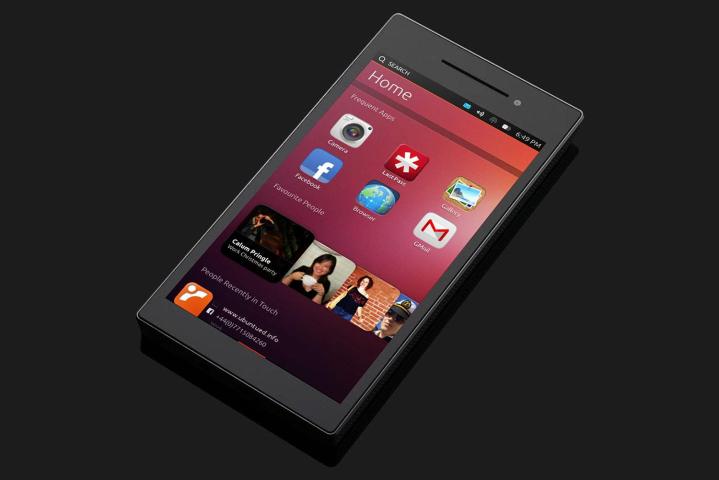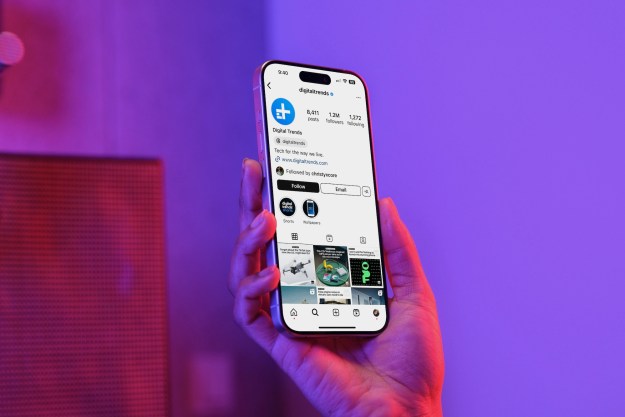
The Ubuntu Edge, Canonical’s awesomely innovative concept phone, failed to reach its goals on Indigogo. Days ago, it broke the record for the most money ever pledged to a crowdfunded online site when it surpassed the $10,266,845 haul of the Pebble Watch, and when the campaign deadline ended on Wednesday, August 21 at 11:59pm Pacific, pledges stood at 12,812,776 with about 20,000 people contributing what they could to make Ubuntu’s dream phone a reality. But let’s be clear: although this may be the most successful attempt at online crowdfunding ever, it’s still a failed campaign. But it may signal a fresh start for Ubuntu.
“All of the support and publicity has continued to drive our discussions with some major manufacturers, and we have many of the world’s biggest mobile networks already signed up to the Ubuntu Carrier Advisory Group,” said Ubuntu founder and Canonical CEO Mark Shuttleworth in a note to supporters of the campaign. “They’ll have been watching this global discussion of Ubuntu and the need for innovation very closely indeed. Watch this space!”
Instead of aiming to merely set a record, Canonical instead shot for the moon, setting its fundraising goal at $32 million.
“We remain optimistic,” Victor Palau, Canonical’s VP of Phone and Hyperscale Delivery told Digital Trends a week before the campaign ended. “It’s going to take something pretty special to make it happen, but we’re talking to enterprise space to see if we can get anyone involved to fully fund the phone. It’s difficult to get these agreements in place in time for the deadline, but we did get Bloomberg, and some others.”
He was referring to the Bloomberg the media company, which pledged $80,000 to the campaign on August 8. No other $80,000 backers emerged.
Ubuntu’s ‘galactic gamble’
The project was an undeniable risk. Our own Andy Boxall called it a “galactic gamble” that could have sunk Canonical if it failed to deliver on the phone’s lofty hardware promises. And those promises were steep. Canonical promised that the Edge would be the first phone that could also act as an adequate PC, thanks to Canonical’s Ubuntu Touch operating system. If Ubuntu doesn’t do it for you, the phone would also dual-boot Google’s Android OS, and come with a lofty set of specs.
The Edge would have 128GB of internal file storage, 4GB of RAM, the fastest processor available on the market (they don’t even know what it is yet), a 4.5-inch 720 x 1280 pixel screen, dual-LTE antenna, Stereo speakers, a sapphire glass screen, and a silicon-anode battery. Aside from the $11,000 Vertu TI, no smartphone yet implements sapphire glass, which is nearly unbreakable (here’s some proof), and silicon-anode batteries are supposed to be the next big leap in battery tech, packing a significant deal more juice into the same space as current lithium-ion batteries.
Sapphire screens and silicon-anode batteries are so cutting edge that we weren’t convinced Canonical could make its ship date of May 2014 should it use them. But Victor Palau insisted that the company had thought this through, telling us that while the battery and sapphire screen tech “wouldn’t be possible [yet] in a mass market phone,” at the 40,000 or so volume of units Canonical targetted, it’s possible.
That was, of course, assuming that a $20 million miracle happened in the final week of the campaign. It never did, and Palau told us that Canonical will not find other ways to fund and make the Edge: “If we don’t make the $32 million target, we will not make the phone on our own.”
Just the beginning for Ubuntu Touch
This isn’t the end of Ubuntu Touch, however. Canonical described the Edge as a small “side project.” It is already working with an unnamed “major manufacturer” to create and deliver a phone with more modest specs – and less sapphire glass. And thanks to the campaign, other manufacturers are showing interest in the OS, though Shuttleworth and Palau won’t tell us exactly which manufacturers those are. Canonical hopes that its efforts prove that there is demand for high-end devices like this and manufacturers need to push the envelope on hardware.
“…Ubuntu Edge is already making a difference,” said Shuttleworth in a statement last week. “This campaign lets enthusiast consumers signal their interest to a mobile industry that caters overwhelmingly to the mainstream. It’s making it clear that we’re no longer satisfied with minor updates; we’re looking for true innovation and we’re ready to pay for it. And that message is getting through. So in a sense, we can be proud of what’s been achieved already – but we really want to hit that $32 million!”
After the campaign ended, Shuttleworth issued an optimistic thank you to all supporters, an endorsement of Indiegogo, and – like a good politician – he didn’t rule out another run at crowdfunding in the future: “We believe [crowdfunding is] a great way to give consumers a voice and to push for more innovation and transparency in the mobile industry. And who knows, perhaps one day we’ll take everything we’ve learned from this campaign – achievements and mistakes – and try it all over again. Thank you all.”
No, the Ubuntu Edge did not fly, but it definitely didn’t completely fail. Canonical’s dream phone fell, but like Buzz Lightyear, the Edge fell with style. With a goal this cool and ambitious, the press and awareness Canonical has gained from this campaign alone may help Ubuntu Touch become a real contender against Android, iOS, and Windows Phone in the future. Hopefully it will help bring sapphire screens and silicon-anode batteries into phones that much sooner and reinforce the idea that the smartphone may just be ready to take on the PC.
Updated on 8-22-2013 by Jeffrey Van Camp: The campaign ended at midnight last night. I’ve updated the article to reflect the final tally and ultimate end of the campaign. A final reflection from Mark Shuttleworth was added.
Updated on 8-21-2013 by Jeffrey Van Camp: The campaign is at $12,350,000 with 13 hours to go. A reader has suggested that Indiegogo could extend the campaign, but we haven’t heard that this will happen yet.
Article originally published on 8-20-2013.




